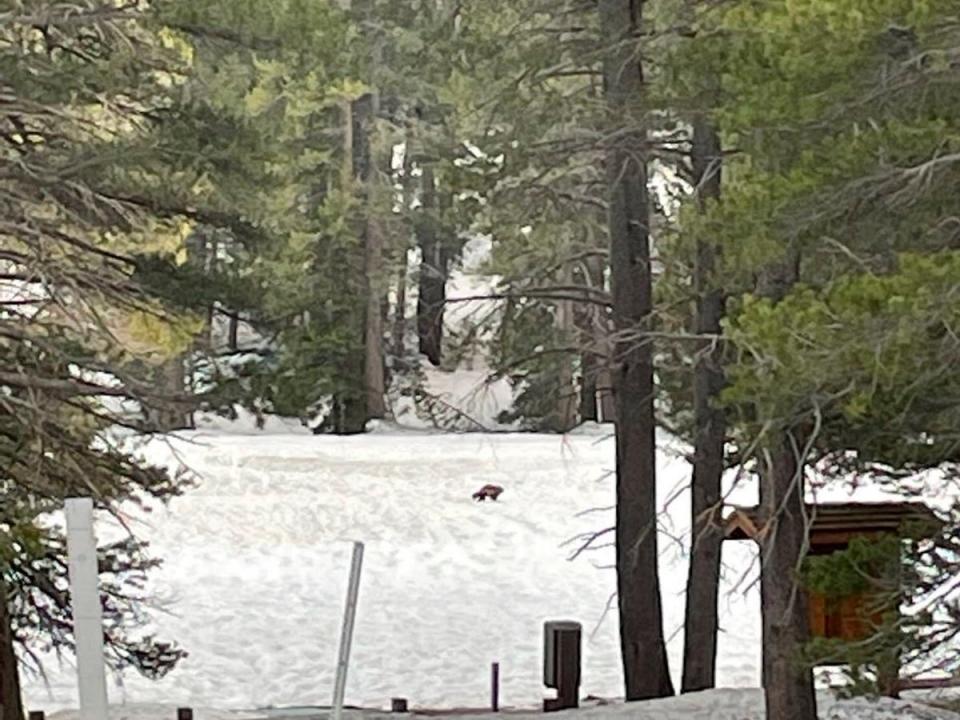Wolverine spotted in California for only the second time in a century

A wolverine has been spotted in a snowy mountain range in California in a rare occurrence that has delighted wildlife experts.
The animal was spotted three times last month in the eastern Sierra Nevada, a mountain range that sits between the Central Valley of California and the Great Basin.
A wolverine has only been seen one other time in California over the last 100 years, state wildlife officials said.
“It’s just really exciting and surprising,” said Daniel Gammons, a senior environmental scientist in California’s Department of Fish and Wildlife.
One wolverine was spotted in the US state from 2008 to 2018, beginning in the Tahoe National Forest, officials said.
Last month’s wolverine is likely a different animal because the animal’s lifespan is usually 12 to 13 years, experts say.
The latest wolverine (seen below) appears to be a young male seeking a mate. The animal has been spotted twice in the Inyo National Forest and once in Yosemite National Park.

The California Department of Fish and Wildlife analysed photos and videos from park visitors and consulted with experts from the US Forest Service, concluding that the animal was a wolverine due to its size, body proportion, colouration and movement patterns.
While wolverines are native to California, they’ve been essentially extinct from the state since the 1920s – likely the result of hunting and fur trapping in the decades following the gold rush, though records from the time don’t indicate what exactly caused the population to vanish.
Male wolverines walk through huge territories spanning several hundred square kilometres. Heavy snowfall in the Western United States may have created “habitat bridges” for the wolverine, Mr Gammons said.
The animal could have travelled from the Rocky and Cascade mountain ranges, or from as far away as Canada or Alaska.
Wildlife officials are trying to get a specimen of the wolverine’s hair or scat for genetic testing.
The species – the largest member of the weasel family – is listed as threatened under the California Endangered Species Act.

 Yahoo Sport
Yahoo Sport 





































